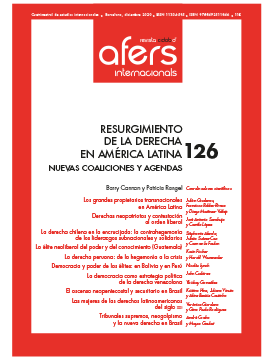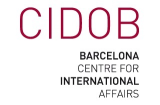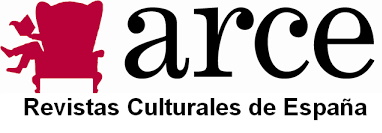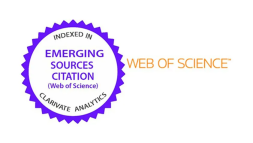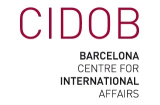Introducción: resurgimiento de la derecha en América Latina
Resum
Revista CIDOB d’Afers Internacionals, n.º 126
Cuatrimestral (octubre-diciembre)
ISSN:1133-6595
E-ISSN:2013-035X
DOI: doi.org/10.24241/rcai.2020.126.3.7
Con la investidura de Mauricio Macri como presidente de Argentina en 2015, se inició un ciclo electoral en América Latina que parecía poner fin a la llamada «marea rosa» de gobiernos progresistas de izquierdas que habían dominado la región desde principios del nuevo milenio. Hasta entonces, la izquierda había centrado mayoritariamente la atención académica, por lo que apenas existían trabajos sobre la derecha (algunas excepciones son Palau, 2010; Domínguez et al., 2011; Vonmaro y Moressi, 2015). Ha sido a partir de este giro electoral que han ido apareciendo trabajos con la derecha como objeto de estudio (véanse, por ejemplo, López Sagrera, 2016; Colombia Internacional, 2019 Luna y Rovira Kaltwasser, 2014; y, reseñados en este volumen, Cannon, 2016; Bohoslavsky et al., 2019). Sin embargo, la mayor parte de esta literatura adopta o bien una perspectiva principalmente política, centrándose sobre todo en las instituciones y los partidos políticos (a saber, Luna y Rovira Kaltwasser, 2014; Vonmaro y Moressi, 2015; Colombia Internacional, 2019), o bien sigue un enfoque más sociológico o histórico, enfatizando el papel de las autoridades de facto –la Iglesia, los medios de comunicación, las empresas (agrícolas e industriales) y el Ejército–, así como las influencias transnacionales, especialmente de los Estados Unidos (Domínguez et al., 2011; Cannon, 2016; Bohoslavsky et al., 2019.
Referències
Bohoslavsky, Ernesto; Jorge David y Lida, Clara E. (coord.). Las Derechas Iberoamericanas: Desde el final de la Primera Guerra hasta la Gran Depresión.Ciudad de México: Colegio de México, 2019.
Cannon, Barry. The Right in Latin America: Elite Power, Hegemony and the Struggle for the State Londres: Routledge, 2016.
Colombia Internacional. «La derecha en América Latina». Colombia Internacional, n.° 99 (julio de 2019). Bogotá: Universidad de los Andes.
Domínguez, Francisco; Lievesley, Geraldine y Ludlam, Steve (ed.). Right-wing Politics in the New Latin America: Reaction and Revolt.Londres: Zed, 2011.
Ekeman, Karl. «On Gramscianism of the Right». Critique and Praxis,13/13 (noviembre de 2018) (en línea) [Fecha de consulta: 20.10.2020] http://blogs.law.columbia.edu/praxis1313/karl-ekeman-on-gramscianism-of-the-right/
López Segrera, Francisco. América Latina: crisis del posneoliberalismo y ascenso de la nueva derecha.Buenos Aires:Ciccus-CLACSO, 2016 (en línea) [Fecha de consulta: 20.10.2020] http://biblioteca.clacso.edu.ar/gsdl/collect/clacso/index/assoc/D11890.dir/America-Latina-Crisis-del-neoliberalismo.pdf
Luna, Jean Paul y Rovira Kaltwasser, Cristobal (ed.). The Resilience of the Latin American Right. Baltimore: John Hopkins University Press, 2014.
Mann, Michael. A History of Power from the Beginning to AD 1760. Cambridge: Cambridge University Press, 1986.
Mudde, Cas. The Far Right Today.Cambridge: Polity,2019.
Palau, Marielle (comp.). La ofensiva de las derechas en el Cono Sur.Asunción: Fundación Rosa Luxemburgo, 2010 (en línea) [Fecha de consulta: 20.10.2020] http://biblioteca.clacso.edu.ar/Paraguay/base-is/20170403044458/pdf_1249.pdf
Robin, Corey. La mente reaccionaria. Madrid: Capitan Swing, 2019.
Sánchez Rodríguez, Jesús. Derecha radical. Auge de una ola reaccionaria mundial.Madrid: Editorial Popular,2019.
Vommaro, Gabriel y Morresi, Sergio (comp.). Hagamos equipo. PRO y la construcción de la nueva derecha en Argentina. Buenos Aires: Universidad Nacional de General Sarmiento, 2015.

